What you need to know about HDMI ARC and eARC
How to connect your TV to your receiver or sound bar
Want to watch Netflix or Amazon Prime Video through a new smart TV? Maybe some over-the-air TV broadcasts, too?
Planning to connect your TV to an A/V receiver or an HDMI-equipped sound bar?
Then you need to know about ARC and eARC. These special HDMI connections can simplify system operation and improve your TV sound.
What is ARC?
ARC (Audio Return Channel) was introduced in 2009. It enables a single HDMI cable to carry picture and sound from a receiver to a TV and an audio signal from the TV back to the receiver or sound bar. If both devices have ARC, you don’t need a separate audio cable to hear the TV sound through your receiver or sound bar.

Without ARC, you need both HDMI and optical digital audio connections between your TV and your sound bar.

With ARC, all you need is an HDMI connection between your TV and your sound bar.
One less cable might not sound like such a big deal, but it does solve a problem for people who want to wall-mount their TV and hide the cables behind the wall.
| ARC | eARC | |
|---|---|---|
| Type of cable needed | HDMI | HDMI with Ethernet |
| Surround sound formats | Compressed 5.1 (standard Dolby Digital & DTS) | Uncompressed 5.1 and 7.1 (Dolby TrueHD & DTS-HD Master Audio), and immersive audio (Dolby Atmos & DTS:X) |
What is eARC?
The new eARC (Enhanced Audio Return Channel) promises three substantial improvements.
- Increased bandwidth, which allows the TV to pass advanced, uncompressed surround sound formats (including Dolby Atmos and DTS:X) along to the receiver or sound bar.
- More reliable HDMI “handshakes” between devices, which means easier, more dependable operation. You may be able to get away with using fewer remote controls.
- The mandatory Lip Sync Correction protocol ensures that the picture and sound always match up.
Is eARC is a game-changer for system configuration?
With eARC, a TV can deliver uncompromised audio signals to an eARC-equipped receiver. That begs the question: Should I connect my cable box (and other video sources) to the TV or the receiver/sound bar?
Making video source connections to the TV

Connecting your video sources to the TV can make system operation easier.
If you only have a few sources, it makes more sense to connect through your smart TV. The advantage here is being able to use a television as your central hub, which simplifies the operation of your system. You’ll select sources using the TV’s remote, which should make your life easier.
And since eARC is capable of passing uncompressed surround sound, you won’t lose audio quality for choosing this route.
Making video source connections to the receiver or sound bar

When you connect your video sources to your sound bar or receiver, you only need one HDMI connection to the TV. That simplifies a wall mount TV installation.
Most of today’s smart TVs have no more than four HDMI inputs. If you have more than four video sources, connect them all through the receiver. Connecting some to the TV and some to the receiver is a recipe for confusion.
If you plan to hang your TV on the wall, you’ll probably want to connect through the receiver, so you’ll only have to run one cable to the TV.
Complex systems that include multi-zone video typically use the receiver as the hub for all the connections.
Setting up an ARC connection
Setting up an ARC connection is simple, and only requires an HDMI cable. Follow the following steps to ensure a proper ARC connection.
- Make sure both your television and A/V receiver or sound bar have ARC-enabled HDMI ports.
- Connect one end of the HDMI cable to the “ARC” labeled port on your television.
- Connect the other end to your ARC port on your sound bar or receiver.
- Activate ARC output on your TV. This is most likely in the settings menu under “audio”.

Some devices automatically switch to ARC mode when the connection is made, but you may have to do it manually in your TV settings.
Do I need a new HDMI cable?
Chances are you do not need a new HDMI cable. As long as yours is 4K and HDR compatible with Ethernet, it shouldn’t have any trouble transferring the data.
Questions about HDMI ARC and eARC
Need help choosing the right A/V equipment? Our advisors know the gear we carry inside and out. They can recommend products you based on your needs.
Purchased components you’re having trouble with? We provide free lifetime tech support with every order.
Contact us today.





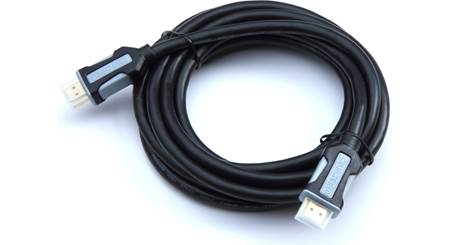
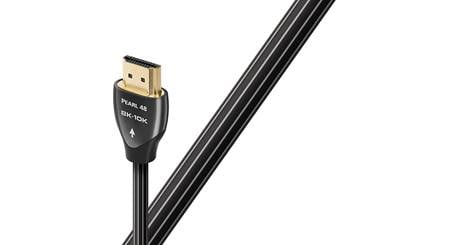
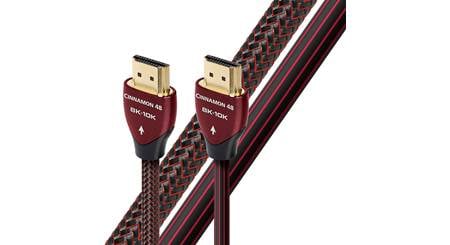
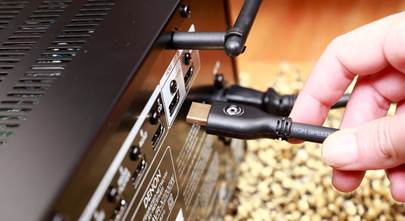

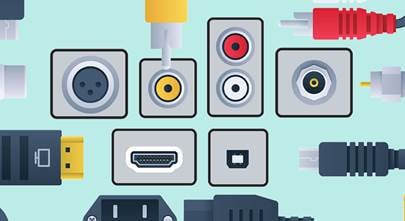
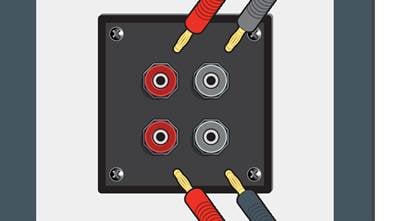
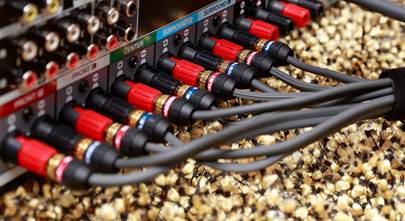


Rodney May from Albuquerque
Posted on 11/9/2023
I recently reconfigured my A/V setup and have a question. I have all of my devices now connecting via HDMI to a Denon AVR-3313CI which then feeds my Sony XBR-55A8H TV. Something is triggering my system where the Xfinity Arris XG1v4 cable box, A/V receiver, and TV turn on randomly both day and night. Sometimes the systems stay on, sometimes they come on and turn off in a minute or two. I Googled the issue and found that there are similar reports, but I have tried all the "fixes" with no luck. Xfinity tech support leaves a lot to be desired, so I thought I would reach out to Crutchfield to see if you have some thoughts on how to fix the issue.
Colin M. from Crutchfield
on 11/11/2023
Kent from Citrus Springs
Posted on 9/18/2023
So will a directional HDMI cable work for ARC/eARC? I have an 8K/4K directional HDMI cable. If it is directional, then I'm thinking it won't support ARC/eARC???
Colin M. from Crutchfield
on 10/5/2023
Ryan from Redding
Posted on 9/13/2023
I have a December 2021 bought LG OLED 83" model# OLED83C1AUA TV. I have my cable box connected to the TV's HDMI #1 input using a HDMI 4K cable. My Sonos ARC sound bar is connected to the TV's HDMI #2 eARC/ARC IN input, my Roku is connected to the TV's HDMI #3 input, and my Firestick is connected to the TV's HDMI #4 input. I also have a Sonos One (gen2) and a Sonos One SL for my surrounds, and a Sonos Sub (gen 3) connected via a Wi-Fi connection. I am trying to figure out the best setup and why my TV's AI Sound Pro with Dolby Atmos settings are greyed out.
Colin M. from Crutchfield
on 10/5/2023
Charles
Posted on 7/26/2023
I strongly suggest you look for a certification label on your cable package. For 8K You want the ULTRA Certified Cable.
Adina Hirschmann from Bergenfield
Posted on 7/4/2023
I purchased a new Onkyo Tx-RZ50 from your Ebay store, got the speakers all set up with Dirac Live successfully, established my zones, usiing the preamp connection for one of them, but having ARC handshake problems with my Vizio D40-D1 HDTV, despite enabling CEC and Device Discovery showing AV Receiver, although faintly. Still, no TV audio coming through my receiver. I am using an active hybrid fiber-optic/metal cable I bought on Ebay. Could the cable have been too long? I overestimated slightly when measuring my room. Please help.
Colin M. from Crutchfield
on 7/5/2023
Jared Stein
Posted on 4/19/2023
Hello I have a question, I have a Sony BPD-S570 Blu-Ray player (old) hooked to a new Yamaha AVENTAGE RX-A6A receiver via HDMI and then the receiver hooked to a new LG 65QNED80 TV via eARC/ARC. The issue is I get a picture from the Blu-Ray player but no sound? I have tried every type of different settings on the TV/receiver/Blu-Ray player and noting works. On a side note, if I use the same setup and plug the reviewer into a different HDMI port on the TV (not eARC/ARC) everything works fine. Any ideas on this issue?
Colin M. from Crutchfield
on 4/20/2023
Jack from Atlanta
Posted on 4/9/2023
I was using eARC on my 58" Vizio to a sound bar but kept getting some flashing along the bottom of the screen lately so switched to using an optical connection and now the flashing is gone. Not sure if it was the ARC causing it or not.
Colin M. from Crutchfield
on 4/20/2023
Dave
Posted on 3/19/2023
Why wouldn't I just connect all of my sources into my receiver and run audio/video HDMI out from said receiver to the tv? I don't understand how eARC benefits when using a receiver, many with upwards of 8 HDMI inputs. Cable box, Blu-ray player, Apple TV, ps5, Xbox, Nvidia shield, home theater pc, etc.just connect every one of these into the receiver inputs and one output to the tv.
Colin M. from Crutchfield
on 3/21/2023
William Settle from Edmonds WA
Posted on 3/18/2023
I have a Samsung Neo QLED 8k and an Anthem MRX 1140. Both are eARC compatible. I have internet, Blueray and Apple TV as inputs. TV is wall mounted. How do you suggest connecting it? Is there any disadvantage to connecting everything to the receiver and then connecting the eARC HDMI to the TV? I have three options for connecting from the internet: ethernet to the receiver, to the Apple device or directly to the TV. Best choice? Thanks Bill
Colin M. from Crutchfield
on 3/21/2023
John from ARLINGTON
Posted on 1/19/2023
Have Panasonic 420 player, Charter Spectrum Cable box, and BenQ V7050i Ultra Short Throw Projector. The V has Arc but.....only has 2 HDMI inputs. Can I simply send the 420 audio to a soundbar via the Audio out, and the video to the BenqQ via HDMI, then can hook the cable box to the BenQ via HDMI, and send the audio to the soundbar via optical? I want to take full advantage of the 420 audio options (Atmos n/a). I have no issue with having pcm from the cable box. From reading both the 420 manual and BenQ manual, I think this can be done. Am I missing something?
Colin M. from Crutchfield
on 1/25/2023